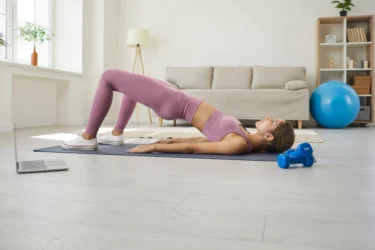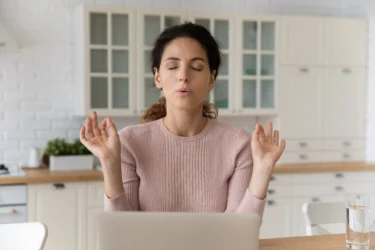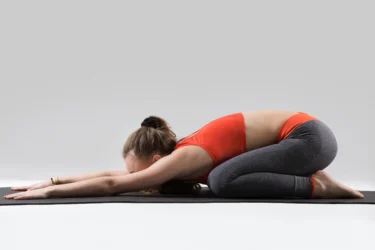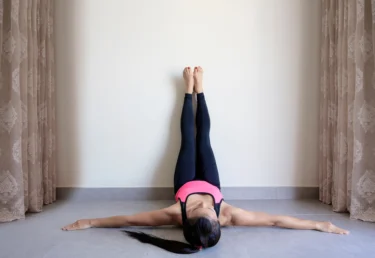6 Best Yoga Poses & Exercises To Deal With Piles
By Dr. Shiv Kishor +2 more

Get,

to manage your symptom
Get your,


4 Cr+ families
benefitted

OTP sent to 9988776655



You’ve successfully subscribed to receive
doctor-approved tips on
Whatsapp

Get ready to feel your best.

Hi There,
Download the PharmEasy App now!!


Register to Avail the Offer
Send OTPBy continuing, you agree with our Privacy Policy and Terms and Conditions

Hi There,
Sign up on PharmEasy now!!
Trusted by 4 crore+ families

OTP sent to 9988776655



You have unlocked 25% off on medicines




Code: NU25
By Dr. Shiv Kishor +2 more
Table of Contents
Piles also known as hemorrhoids are a medical condition that causes swelling of veins around the anal region. This swelling occurs in the lowermost part of the anus and can cause a considerable amount of pain and discomfort2.
Piles can either be internal, which cannot always be seen or felt by you, or external when enlarged they may protrude around the anal opening and can also be felt as small water-balloon-like swellings1. Piles is actually a common disease, while it is not entirely clear what causes it, constipation, prolonged diarrhoea, heavy lifting, low fibre diet, and pregnancy may trigger it. Your doctor may advise medications and some pain relievers, stool softeners and laxatives, topical creams, and ointments that can provide relief from the symptoms. But in some cases, surgery is required. Pills can cause immense pain and discomfort. Its symptoms include:

As soon as you notice any of the above-mentioned symptoms, you must consult a doctor right away instead of self-diagnosing. If piles persist for more than a week and do not get better with medications, you must seek medical advice.
Exercise is one of the recommended lifestyle changes to manage haemorrhoids and may be suggested by the doctor, depending on your condition3. Regular physical stimulation helps keep the bowels functioning properly, reduces issues with constipation and improves circulation. Read below to find out the right exercise for piles to help you cope with the pain and discomfort.
Did you know?

This kegel exercise is easy to do, it helps strengthen your pelvic floor muscles and can make passing stool much easier by relaxing your anal sphincter4. It also prevents uncomfortable straining. Start by lying on your back or sitting and contracting your anal muscles as if you are trying to stop yourself from passing gas. Hold this contraction for 5 seconds and release it for 10 seconds. Repeat this process 5 times and use only half your strength. Squeeze and relax the muscles as fast as you can for as long as possible. You may do this exercise 2 to 4 times throughout the day.

Practising deep breathing is one of the best exercises for piles. This exercise helps alleviate the pelvic floor muscle tension and promotes relaxation. Sit in an upright position and place your hands above your waist on either side of your lower rib cage. As you inhale, breathe deeply through your abdomen, allowing your belly to expand fully, and then slowly exhale by bringing your navel towards your spine. Continue this exercise for up to 5 minutes.

This is a very simple exercise that promotes better circulation around your anus and relieves constipation. It allows your lower back and hips to relax. Sit on your knees and lay down on the mat, place your hands on your lower abdomen to increase pressure on this area. Start the exercise by stretching your hands forward, in front of your head, and extend your arms as far as possible or relax them alongside your body. Rest in this position for up to 5 minutes and do this exercise regularly for good results.

This exercise boosts circulation around the anus area. It is great for alleviating discomfort and irritation. You must begin by sitting on your right side next to a wall, place your legs up on the wall, and lie down on your back. You may rest your arms in any comfortable position or gently massage your abdomen. Hold this position for up to 15 minutes5.

Applying pressure to your abdomen can help ease digestion. It also helps relax the muscles in your abdomen, buttocks and anus. This exercise or asana must be performed by lying on your back, bending one or both knees and drawing them in towards your chest. Now place your hands around your shins, clasping your hands or holding opposite elbows, and stay in this position for up to 1 minute.

This is another beneficial exercise that can strengthen and improve the flexibility in your inner thighs, groin, and knees. It will stimulate your abdominal organs and soothe any kind of digestive discomfort. Sit comfortably and place the soles of your feet together and your knees out wide, now interlace your fingers around your toes as you straighten up your spine. Stay in this particular position for up to 1 minute.
These are some of the exercises you can do in the comfort of your home. These exercises, when done regularly, can also help you in dealing with problems like constipation, which is often associated with piles. You may consider brisk walking and running which encourage healthy bowel movements, also, paddling (while lying on the bed) will improve your anal sphincter control as the lower part of your body is being built and strengthened.
While Yoga poses help improve the tone of the Sphincters, it is not primarily a treatment for piles. Piles should be treated by a proctologist first.
Dr. M.G. Kartheeka, MBBS, MD
Any strenuous or high-impact exercises may aggravate your symptoms of piles. These are the activities/exercises you must avoid:
Also Read: 8 Health Benefits Of Vajrasana!
Piles may seem like a common disease that many people ignore in the initial days, but this condition can cause a huge hindrance in your normal life. It leads to unnecessary stress and the condition may worsen quickly if ignored. It is not something you should feel shy about and consulting a doctor can provide you with relief from the symptoms of piles. It is true that exercise is helpful for piles, but you must also watch your diet if you want to see improvement in your condition. Try including more foods in your diet with high fibre content, drink plenty of fluids, and cut down on alcohol, caffeine, oily and fried foods. When you make these conscious changes in your lifestyle, you will be able to get back to normal life with confidence.
Also Read: Safe Stretching Exercises You Can Try If Suffering From Phimosis
In general, mild conditions of piles may go away within a few days on their own with the intake of a healthy diet, fluids, and over-the-counter drugs. Severe cases of piles may not go away on their own and require medication or surgery, as recommended by the doctor.
Dairy products like full cream milk, cheese, and heavy cream products should be avoided in excess if you are suffering from piles. Yoghurt, on the other hand, is loaded with probiotics that feed the gut bacteria and thus can be consumed.
Yes, kegel exercises may strengthen your pelvic floor muscles, which helps provide good support for internal haemorrhoids and prevent existing ones from protruding.
There is a chance of recurrence of piles after surgery if the underlying cause is not addressed. Talk to your doctor and sincerely follow the suggested lifestyle modifications in order to minimise the risk of recurrence after your pile’s surgery.
Disclaimer: The information provided here is for educational/awareness purposes only and is not intended to be a substitute for medical treatment by a healthcare professional and should not be relied upon to diagnose or treat any medical condition. The reader should consult a registered medical practitioner to determine the appropriateness of the information before consuming any medication. PharmEasy does not provide any guarantee or warranty (express or implied) regarding the accuracy, adequacy, completeness, legality, reliability or usefulness of the information; and disclaims any liability arising thereof.
Comments

Leave your comment...
You may also like
Comments